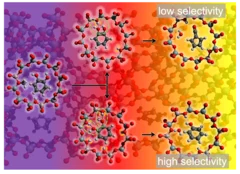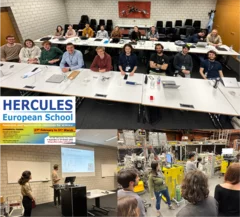Reaction Dynamics

Apart from maintaining the VUV beamline at the Swiss Light Source, the Reaction Dynamics Group studies reactions and species relevant to low temperature combustion, catalysis, and atmospheric chemistry. We employ different flavors of coincidence techniques with velocity map imaging and time-of-flight mass spectrometry, together with synchrotron radiation as well as ultrafast lasers. Our goal is to understand chemical reaction dynamics in various energy and time domains.
Scientific Highlights
Unveiling the reaction mechanism shines light on the selectivity increase in catalytic processes
Increasing the selectivity of a chemical process through rational catalyst design is the Holy Grail of heterogeneous catalysis. Researchers at PSI and ETH Zürich showcase how revealing hidden steps in reaction pathways can steer processes towards preferred products, as demonstrated in a study focused on biomass valorization.
The Hercules School visits PSI
20 international students visited PSI as part of the renowned Hercules School to learn about our state-of-the-art techniques and methodologies at our large scale facilities.
So entstehen Fussballmoleküle im Weltall
Ein internationales Forscherteam zeigt, wie sich Fullerene im Weltall bilden.


